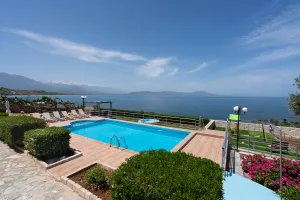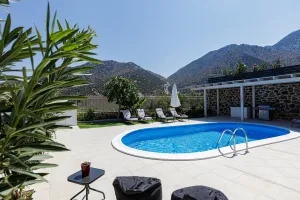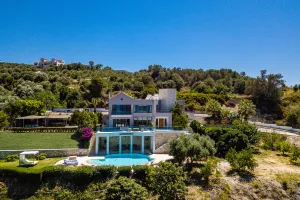The Venetian Harbor
Rethymno’s modest harbor was originally protected by a breakwater established by the Venetians in the 13th century, and now by the larger breakwater beyond. There is an impressive lighthouse at the end of the pier, built by the Turks during their occupation of the city. The quayside boasts a good selection of tavernas set in idyllic Venetian and Turkish buildings with outside seating. There are authentic fishing boats docked in the harbor and daily boat trips available to nearby beaches. A few of the boats resemble old wooden sailing ships, adding to the nostalgic atmosphere of the port.
The Fortezza Castle
The Fortezza (Italian for "fortress") is the citadel of the city of Rethymno, built by the Venetians in the 16th century and taken over by the Ottomans in 1646. Over the centuries, many houses were built within the citadel, but were destroyed during and after the 2nd World War. There are still a handful of historic buildings to be seen within the Fortezza, and the citadel is now well maintained and open to visitors. This ancient relic is visible from every corner of the city and offers sweeping views of Rethymno and the western coast of the island.
Local Villages
There are a number of quaint villages to be visited in the Rethymno region of Crete. The first among these has to be Plakias, famous for its 1.4km-long sandy beach, adorned with umbrellas, sunbeds, and snack bars, and hosting watersports and beach volleyball. In addition, Plakias is renowned for Paligremnos, a steep natural wall at the eastern end of the beach popular with rock climbers world-over. Another famous village near Rethymno is Spili, where the waters spilling from the fountain in the main square are remarkably refreshing. This impressive fountain is made up of a row of lion heads carved in stone, a majestic sight for all visitors. Near the village are a selection of Byzantine churches and a medieval tower that are also worth visiting. A second lion-head fountain can be found in the 12th-Century Venetian village of Roussospiti, often referred to as the “balcony of Rethymno” as it overlooks the city from the slopes of Mt. Vrissinas. Also not to be missed is the village of Argiroupoli, between the island’s Mousselas and Petres rivers. The naturally diverse area between the rivers is known as the 10 Founts of Mousselas River or Agia Dinami, meaning Holy Power, and boasts an impressive array of waterfalls, wild flora, streams, and ponds. Argiroupoli is home to an enormous 2000-year-old plane tree, one of Crete’s most spectacular natural monuments.
Rethymno Sightseeing
A few of the many destinations worth seeing within the city itself include Guora Gate (Megali Pyli), which is the old city gate; the impressive Sultan Ibrahim mosque; and the esteemed Catholic church of Agios Antonios. Visitors are also encouraged to explore the Archaeological Museum of Rethymno, the Historical and Folklore Museum, and the Museum of Sea Life. Furthermore, The Collection of Eleni Frantzeskaki is located in Rethymno and includes traditional handmade fabric, lace, embroidery, and jewelry. Slightly farther afield, the Rethymnian Brewery is another must-see; a microbrewery located near Armeni that produces beer using conventional organic methods in accordance with German traditions.















